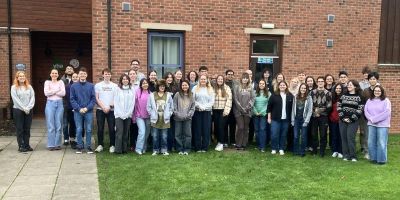Understanding how peptides self-assemble

Scientists have developed an integrated computational and experimental approach to investigate the way proteins and peptides – chains of amino acids – aggregate.
Understanding the way the peptides assemble into such aggregates is important for two reasons:
-
Amyloid fibrils are a form of peptide aggregate and some of these are involved in the development of neurodegenerative conditions such as Alzheimer’s disease. Understanding the way in which peptide aggregation occurs could pinpoint key steps in the process that are relevant for drug discovery efforts aimed at preventing neurodegeneration.
-
There is significant excitement and interest in using peptide based aggregates in material science, for instance, as scaffolds for tissue engineering or molecular electronics. Understanding how aggregation occurs represents a first step towards intelligent manufacture of such materials.
Building a clear picture of how peptides aggregate is challenging because the process typically involves a number of heterogeneous and transient steps.
The study, published in Science Advances, was led by Professor Andrew Wilson, Prof Sheena Radford FRS (both from the Astbury Centre for Structural Molecular Biology, University of Leeds), and Prof Carol Hall (North Carolina State University). It describes research focussed on co-aggregation of two peptide fragments of the Amyloid-Beta (Ab) peptide implicated in Alzheimer’s disease (Aβ40 and Aβ16-22) as a model system.
Despite similarities between the two peptides the scientists found that they did not co-assemble and instead that Aβ16-22 aggregated very rapidly into fibrils containing only Aβ16-22. In turn the Aβ16-22 fibrils accelerated formation of Aβ40 assembly: the Aβ40 monomers were observed to dock onto the Aβ16-22 fibril surface, which catalysed the assembly of Aβ40 oligomers which then fell of the Aβ16-22 fibril surface and went on to form Aβ40 containing only Aβ16-22.
Professor Wilson said: "This work is hugely important. It provides a framework for the study of complex self-assembly reactions."
Once we have a clearer idea of how these reactions work, we have a starting point to design possible pharmaceutical interventions or to identify ways we can harness the process of assembly to build biological materials.
Note to editors
Journalists wanting a copy of the paper or to talk to Professor Wilson, please contact David Lewis in the University of Leeds media office: 0113 343 2049 or d.lewis@leeds.ac.uk




